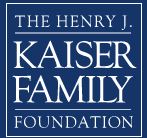Medicaid Financial Eligibility in Pathways Based on Old Age or Disability in 2022: Findings from a 50-State Survey
(By MaryBeth Musumeci, Molly O’Malley Watts, and Meghana Ammula for Kaiser Family Foundation published July 11, 2022)
Medicaid is an important source of health and long-term care coverage for seniors and people with disabilities. As of 2019, 8.5 million full benefit Medicaid enrollees are age 65 or older, and another 10 million people are enrolled in a full benefit pathway where eligibility is based on disability. Other people with disabilities qualify for Medicaid solely based on their low income. The Medicaid pathways in which eligibility is based on old age or disability are known as “non-MAGI” pathways because they do not use the Modified Adjusted Gross Income (MAGI) financial methodology that applies to pathways for pregnant people, parents, and children with low incomes. In addition to considering old age/disability status and income, many non-MAGI pathways also have asset limits. The fact that most non-MAGI pathways are optional results in substantial state variation. Continue reading here…

Notice: The link provided above connects readers to the full content of the posted article. The URL (internet address) for this link is valid on the posted date; medicarereport.org cannot guarantee the duration of the link’s validity. Also, the opinions expressed in these postings are the viewpoints of the original source and are not explicitly endorsed by AMAC, Inc.; the AMAC Foundation, Inc.; or medicarereport.org
